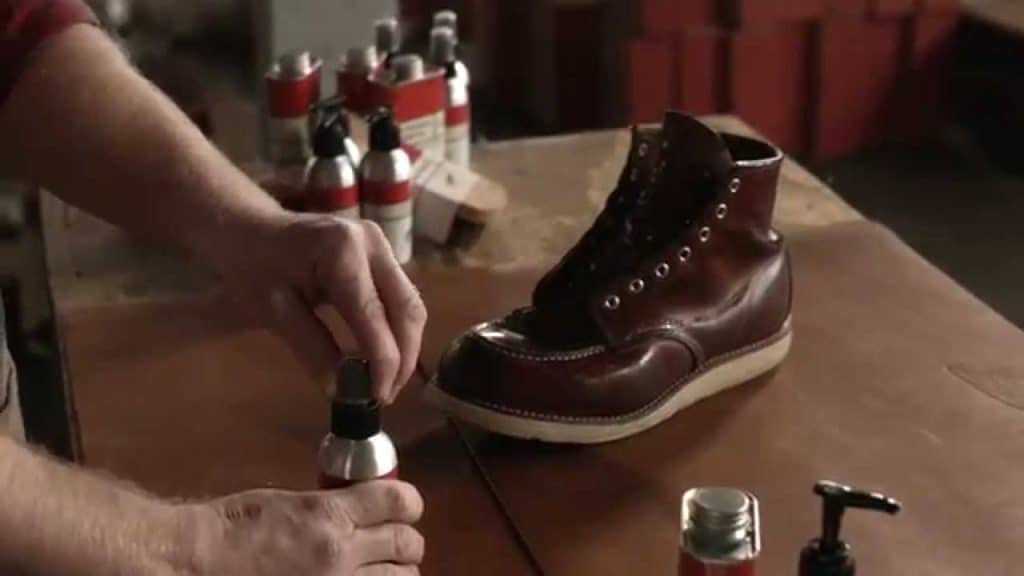Why Conditioning Matters for New Boots
When it comes to new boots, conditioning is a crucial step that many people overlook. Conditioning new boots is essential to ensure they last long, perform well, and look great. One of the primary benefits of conditioning is waterproofing. By applying a waterproofing agent, you can protect your boots from water damage, which can lead to cracking, discoloration, and other issues. Conditioning also helps to protect the leather, preventing it from drying out and becoming brittle. This is especially important for boots made from high-quality leather, as it can help maintain their suppleness and flexibility. Furthermore, conditioning can help prevent cracking, which can occur when the leather becomes too dry or brittle. Whether you’re planning to oil your new boots or not, conditioning is a vital step that should not be skipped. In fact, conditioning is a precursor to oiling, and it’s essential to condition your boots before applying any oil. By doing so, you can ensure that your boots are properly prepared to receive the oil, which can help to moisturize the leather and repel water. So, should you oil new boots? The answer is not a simple yes or no. It depends on various factors, including the type of leather, the intended use, and the manufacturer’s instructions. In the following sections, we’ll delve deeper into the role of oiling in boot care and provide guidance on how to choose the right oil for your new boots.
The Role of Oiling in Boot Care
Oiling is a crucial aspect of boot care, and it plays a vital role in maintaining the health and longevity of new boots. The primary purpose of oiling boots is to moisturize the leather, repel water, and maintain flexibility. When done correctly, oiling can help to keep the leather soft and supple, preventing it from drying out and cracking. Additionally, oiling can help to repel water, reducing the risk of water damage and discoloration. This is especially important for boots that are exposed to harsh weather conditions or heavy use. Furthermore, oiling can help to maintain the flexibility of the leather, ensuring that the boots remain comfortable and flexible over time. However, it’s essential to note that oiling is not a one-size-fits-all solution. The type of oil used, the frequency of application, and the amount of oil applied can all impact the effectiveness of the oiling process. In the next section, we’ll explore the pros and cons of oiling new boots, including the potential risks of over-oiling and the benefits of using the right type of oil.
Should You Oil New Boots? Weighing the Pros and Cons
The decision to oil new boots is a crucial one, and it’s essential to weigh the pros and cons before making a decision. On one hand, oiling new boots can provide numerous benefits, including moisturizing the leather, repelling water, and maintaining flexibility. When done correctly, oiling can help to extend the life of the boots, prevent damage, and ensure optimal performance. However, there are also potential risks to consider, such as over-oiling, which can leave a greasy residue on the surface of the leather. Additionally, using the wrong type of oil can damage the leather or affect its breathability. It’s also important to follow manufacturer instructions, as some boots may not require oiling or may have specific oiling recommendations. So, should you oil new boots? The answer depends on various factors, including the type of leather, the intended use, and the manufacturer’s instructions. By understanding the pros and cons of oiling new boots, you can make an informed decision that’s right for your boots. In the next section, we’ll provide guidance on how to choose the right oil for your new boots, including factors to consider such as leather type, boot material, and intended use.
How to Choose the Right Oil for Your New Boots
Selecting the right oil for your new boots is crucial to ensure that they receive the proper care and maintenance. With so many options available, it can be overwhelming to choose the right one. However, by considering a few key factors, you can make an informed decision that’s right for your boots. First, consider the type of leather your boots are made of. Different types of leather, such as full-grain, top-grain, or suede, require different types of oil. For example, full-grain leather may require a heavier, more moisturizing oil, while suede may require a lighter, more gentle oil. Next, consider the material of your boots. Boots made from exotic materials, such as alligator or ostrich, may require specialized oils that are designed specifically for those materials. Additionally, consider the intended use of your boots. If you plan to wear them in harsh weather conditions or for heavy outdoor use, you may want to choose an oil that provides extra waterproofing and protection. Finally, be sure to read and follow the manufacturer’s instructions for oiling and maintenance. By choosing the right oil for your new boots, you can ensure that they receive the proper care and maintenance to extend their lifespan and optimize their performance.
A Step-by-Step Guide to Oiling New Boots
Oiling new boots can seem like a daunting task, but with the right guidance, it’s a simple process that can make a big difference in the longevity and performance of your boots. Here’s a step-by-step guide to help you get started:
Step 1: Prepare Your Boots – Before you start oiling, make sure your boots are clean and dry. Remove any dirt, debris, or old conditioner from the surface of the leather. This will ensure that the oil penetrates evenly and effectively.
Step 2: Choose the Right Oil – Select the right oil for your boots based on the type of leather, material, and intended use. Refer to our previous section on “How to Choose the Right Oil for Your New Boots” for guidance.
Step 3: Apply the Oil – Using a soft, clean cloth, apply a small amount of oil to the leather. Start at the toe and work your way up, using gentle, circular motions to spread the oil evenly. Be careful not to apply too much oil, as this can lead to a greasy residue.
Step 4: Allow the Oil to Absorb – Let the oil absorb into the leather for at least 30 minutes. This will allow the oil to penetrate deeply and provide maximum protection and moisturizing benefits.
Step 5: Buff the Leather – Using a clean, dry cloth, buff the leather to remove any excess oil and even out the finish. This will help to prevent a greasy residue from forming.
Step 6: Repeat as Necessary – Depending on the type of leather and the intended use of your boots, you may need to repeat the oiling process regularly. Be sure to follow the manufacturer’s instructions and take into account the specific needs of your boots.
By following these simple steps, you can ensure that your new boots receive the proper care and maintenance to extend their lifespan and optimize their performance. Remember to always follow the manufacturer’s instructions and take into account the specific needs of your boots.
Common Mistakes to Avoid When Oiling New Boots
When it comes to oiling new boots, there are several common mistakes that people make that can lead to subpar results or even damage to the boots. By being aware of these mistakes, you can avoid them and ensure that your boots receive the proper care and maintenance.
One of the most common mistakes is using too much oil. This can lead to a greasy residue that attracts dirt and dust, causing the boots to look dirty and worn. Instead, use a small amount of oil and apply it evenly to the leather.
Another mistake is applying the oil unevenly. This can cause some areas of the leather to become over-oiled, while others remain dry and cracked. To avoid this, use a soft, clean cloth to apply the oil in gentle, circular motions.
Neglecting to condition the leather before oiling is also a common mistake. Conditioning helps to open up the pores of the leather, allowing the oil to penetrate deeply and provide maximum protection and moisturizing benefits. Always condition the leather before oiling to ensure the best results.
Not following the manufacturer’s instructions is another mistake to avoid. Different types of leather and boots require different types of oil and application methods. Be sure to read and follow the manufacturer’s instructions to ensure that you’re using the right oil and applying it correctly.
Finally, not oiling regularly enough can also be a mistake. Depending on the type of leather and the intended use of the boots, you may need to oil them regularly to maintain their condition and performance. Be sure to follow the manufacturer’s instructions and take into account the specific needs of your boots.
By avoiding these common mistakes, you can ensure that your new boots receive the proper care and maintenance to extend their lifespan and optimize their performance. Remember, proper boot care and maintenance is key to getting the most out of your investment.
The Benefits of Regular Boot Maintenance
Regular boot maintenance is essential to ensure the longevity and performance of your new boots. By taking the time to properly care for your boots, you can extend their lifespan, prevent damage, and ensure they continue to look and feel their best.
One of the primary benefits of regular boot maintenance is that it helps to prevent damage. Boots that are not properly cared for can become dry, cracked, and brittle, leading to premature wear and tear. By regularly conditioning and oiling your boots, you can keep the leather soft and supple, reducing the risk of damage.
Regular boot maintenance also helps to ensure optimal performance. Boots that are well-maintained are more likely to provide the comfort, support, and protection you need, whether you’re hiking, working, or simply running errands. By keeping your boots in good condition, you can enjoy improved performance and reduced fatigue.
In addition to preventing damage and ensuring optimal performance, regular boot maintenance can also help to extend the life of your boots. Boots that are properly cared for can last for years, even decades, with minimal signs of wear and tear. This can save you money in the long run, as you won’t need to replace your boots as frequently.
Finally, regular boot maintenance can also help to maintain the appearance of your boots. Boots that are well-maintained are more likely to look their best, with a rich, vibrant color and a smooth, even finish. This can be especially important if you’re looking to make a good impression, whether you’re at work or out on the town.
By incorporating regular boot maintenance into your routine, you can enjoy all of these benefits and more. Whether you’re a seasoned outdoorsman or just starting to build your boot collection, taking the time to properly care for your boots is essential to getting the most out of your investment.
Conclusion: Oiling New Boots the Right Way
In conclusion, oiling new boots is a crucial step in ensuring their longevity and performance. By understanding the importance of conditioning, the role of oiling, and how to choose and apply the right oil, you can give your boots the care they need to thrive. Remember, should you oil new boots, it’s essential to weigh the pros and cons, avoid common mistakes, and prioritize regular maintenance to get the most out of your investment.
By following the guidelines and tips outlined in this article, you can confidently oil your new boots and enjoy the benefits of waterproofing, protected leather, and optimal performance. Whether you’re a seasoned boot owner or just starting out, proper boot care and maintenance are key to extending the life of your boots and ensuring they continue to look and feel their best.
So, should you oil new boots? The answer is a resounding yes – but only if you do it the right way. By taking the time to learn about the best practices for oiling new boots, you can enjoy the many benefits of proper boot care and maintenance. Happy booting!





